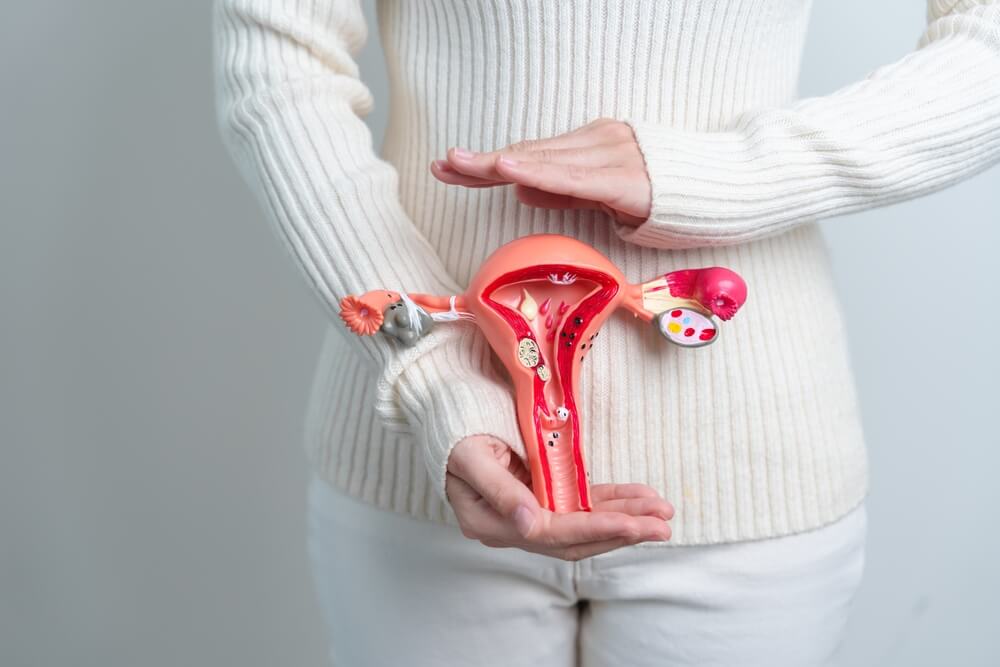The advent of technological advancements in healthcare has ushered in a new era of possibilities and treatments, revolutionizing the way medical procedures are performed. One such breakthrough standing at the forefront of this transition is the Robotic Hysterectomy, a modern approach turning heads in gynecologic surgery.
Robotic Hysterectomy is a minimally invasive surgical procedure, an innovative alternative to traditional procedures like the open and laparoscopic hysterectomy. It involves the precise removal of the uterus or womb, often employed to resolve health issues such as uterine fibroids, abnormal uterine bleeding, or malignancies. This technique can be found in medical centers such as the My OBGYN Specialists, which invest in top of the art technology and patient care.
Robotic hysterectomy uses a sophisticated robotic system, typically the Da Vinci Surgical System, designed to enhance the surgeon’s capabilities, reduce patient discomfort, and shorten recovery periods.
As potential patients, undergoing any medical procedure, especially surgery, often involves an informed decision-making process influenced by a myriad of factors. When it comes to a Robotic Hysterectomy, the concerns amass – Is it safe? Is it effective? What are the potential risks or benefits? How does it offer an edge over the traditional hysterectomy methods? The answers to these pressing questions will enable you to deliberate on whether or not to consider Robotic Hysterectomy as a viable treatment option.
In-depth Understanding of Robotic Hysterectomy
Tracing the Evolution
The concept of hysterectomy has come a long way with evolving medical technology. Traditional surgical methods, including open and laparoscopic hysterectomy operations, have been reliably employed for uterine removal surgery for many years. As gynecologic procedures started becoming more complex, the need for advanced methods was palpable. As a solution, minimally invasive gynecology began to dawn, spearheaded by innovations like Robotic-Assisted Gynecological Surgery.
The da Vinci Hysterectomy, a type of robotic surgery technique, emerged as a groundbreaking resolution, fundamentally altering both perceptions and practices. It offered higher precision, yielding better execution for complex gynecologic surgeries. As the name proposes, this system involves robotic assistance which, under the total control of the surgeon, accurately mimics their hand movements, hence countering the limitations of laparoscopic surgery and open surgery.
Trends in robotic hysterectomy have been witnessing a positive upswing since the 2000s, making it a critical component of modern-day healthcare. With constant improvements, partial and full robotic hysterectomy procedures are becoming more advanced and user-friendly, resulting in escalating acceptance and application in medical facilities around the globe.
Procedure Explained
A robotic hysterectomy is a marvel designed to provide a less invasive alternative to traditional procedures while promising similar, if not better, outcomes. The process starts with the surgeon making tiny incisions near the navel, through which a camera and specialized robotic instruments are inserted. The doctor then operates the robotic arms from a computer console, offering a high-definition, three-dimensional view of the surgical area for precise movements.
This revolutionary method allows for the effective execution of both partial and full hysterectomy procedures. The da Vinci Hysterectomy system employs an unmatched degree of control, providing surgeons the ability to execute complex tasks with high precision and efficiency, even in hard-to-reach areas.
Post-procedure, robotic surgery recovery is typically faster and less painful than traditional surgical methods. Patients often experience reduced bleeding, fewer complications, and shorter hospital stays, which significantly enhances the overall patient experience.
Overall, the robotic hysterectomy procedure aligns with the ongoing paradigm shift towards patient-centered healthcare, making it a promising choice for patients considering hysterectomy.
Advantages and Disadvantages of Robotic Hysterectomy
The Positives
Robotic Hysterectomy, specifically the da Vinci Hysterectomy, offers an array of benefits over traditional hysterectomy surgical procedures. Foremost, the precision offered by these robotic surgery techniques minimizes risks associated with surgical accidents.
This procedure is a part of advanced robotic surgery and minimally invasive gynecology. It reduces patients’ scarring and post-operative pain, as much smaller incisions are needed than in a traditional open hysterectomy. Consequently, patients generally undergo a speedier recovery – leading to shorter hospital stays and a quick return to everyday life.
Additionally, the surgeon’s enhanced visibility and dexterity during a robotic-assisted gynecological surgery means complex gynecologic surgeries can be performed with more confidence. The robot’s arms can rotate 360 degrees, reaching parts of the anatomy that would otherwise be harder to access with traditional laparoscopic instruments.
The Negatives
While the positives are striking, it is crucial to consider the potential drawbacks of therapy.
- The higher cost is a significant factor. Robotic Hysterectomy, with its technologically advanced equipment, tends to be more costly than traditional procedures, which may not be covered entirely by insurance.
- Since robotic systems like the da Vinci are relatively new, not all hospitals and surgeons are equipped or adequately trained to perform these procedures. Therefore, the availability of robotic surgery is somewhat limited geographically, which can present challenges for patients living in distant or rural areas.
- Lastly, although robotic hysterectomy does decrease many risks associated with traditional surgical methods, it is a surgical procedure, and all surgeries come with inherent risks. These can include infections, reactions to anesthesia, and potential complications during recovery—though overall, these risks remain relatively low.
Therefore, while robotic hysterectomy offers substantial benefits, the decision to undergo such a procedure is personal and should always be made in consultation with a knowledgeable and experienced healthcare professional.
Drawing Comparisons
Traditional Surgery vs Robotic Hysterectomy
When weighing up between a traditional hysterectomy surgical procedure and a robotic hysterectomy procedure, the advances in robotic surgery techniques make for an impressive argument. Traditional methods, mostly encompassing open surgery or laparoscopic hysterectomy operations, have been the foundation of gynecology for many years. However, they can involve extensive incisions, more considerable pain, longer hospital stays, and recovery periods.
On the flip side, methods such as the robot-assisted laparoscopic hysterectomy or the da Vinci hysterectomy have emerged as game-changers bringing forth a new era in minimally invasive gynecology. These modern approaches decrease pain and scarring due to smaller incisions, reduce the risk of complications, and promote quicker recovery – benefits which traditional surgeries struggle to match. Furthermore, they offer better precision and control for the surgeon, making complex gynecologic surgeries more manageable and safer.
Highlighting Personal Factors
Although the benefits of robotic-assisted gynecological surgery are evident, the choice between traditional and robotic hysterectomy cannot be universal and will depend on personal health conditions, age, and other individual factors.
For instance, certain medical conditions may make traditional surgeries a more feasible option. Similarly, the patient’s body mass index (BMI), previous surgical history, or concurrent health issues might influence this vital decision. Also, the cost factor can not be undermined – while robotic procedures might promise a quicker recovery and lower complication rates, they do significantly cost more than conventional methods.
Thus, while robotic hysterectomy certainly harbors an exciting array of potential benefits, patient-specific considerations are key and require a detailed discussion with a healthcare provider. The final choice for a partial or full robotic hysterectomy, or a more conventional method, should always synthesize one’s personal health conditions, financial status, and comfort level with the healthcare provider’s expert opinion.
Robotic Hysterectomy: Weighing the Pros and Cons
A deep dive into the world of robotic hysterectomy reveals how technology is advancing the confines of healthcare. This promising arm of robotic-assisted gynecological surgery, including partial and full robotic hysterectomy procedures, brings with it an array of benefits. From precision and control of advanced robotic surgery techniques to faster recovery times and reduced risks of complications – robotic hysterectomy stands out as a symbol of modern medical science’s dawn.
However, despite the allure of the advantages, it’s imperative to consider its potential limitations. The higher costs and availability only in certain geographic areas are significant points. Additionally, personal health conditions, age, and individual factors profoundly influence the decision to opt for this procedure. Moreover, like any surgical procedure, albeit minimal, risks remain that must be acknowledged.
The journey from traditional, open surgical methods to laparoscopic procedures and now, to technologically superior robotic procedures like the da Vinci Hysterectomy, represents a remarkable evolution. Nevertheless, every surgical procedure has a rightful place and continues to be relevant for specific patients and situations.
The ultimate decision for a minimally invasive hysterectomy or a traditional one necessitates a detailed discussion with your healthcare provider, compiling all factors – personal health, costs, recovery expectations, etc. Towards making an informed decision, it is more important now than ever for healthcare professionals and families alike to measure the pros and cons in light of the patient’s individual circumstances.
To make sure you made the right decision, contact our clinic today and schedule a consultation with a medical expert. This ensures the selected path is not only cutting-edge but also appropriately tailored to meet individual clinical needs and expectations.


